Zero to Proficient: 5 Golden Rules for Ordinary People to Teach Themselves Software Development

The sound of keyboard clacking is still heard in the office building at 3 a.m. 26-year-old Li Yang stared at the code bouncing on the screen and suddenly realized that he, who couldn’t even recognize all the HTML tags three years ago, was able to independently develop a community APP with a daily activity of 100,000+. It’s not the miracle of a genius, but a path of growth that can be replicated by every ordinary person! –The first thing you need to do is to get the right self-learning rules.

I. Cracking the technical code: 5 core skills to build a competitive pyramid
-
The Art of Choosing a Programming Language
Java is not the only answer, but it is definitely a shortcut to success. The language that holds 23% of the world’s market share is as capable of developing Android apps as it is of building enterprise-class systems, and is like the reinforced concrete of the construction world. Remember: programmers who specialize in one language for three years are often preferred by headhunters over "full-stack engineers" who dabble in ten languages for five years. -
The magic world of frameworks
When you can start a server in three lines of code with Spring Boot, and build an interactive interface in ten minutes with Vue.js, you’ll understand why it’s said that "frameworks are the leverage of the programmer". Mastering design patterns such as MVC and MVVM is equivalent to obtaining the key to open modern software development. -
The Beauty of Logic in Data Structures
The binary tree is not only a mandatory interview question, but also the cornerstone of understanding the recommendation algorithm. Try implementing a real-time leaderboard with a red-black tree, and optimizing friend recommendations for social networks with graph theory – these real-world scenarios are ten times more effective than rote memorization of algorithmic questions. -
The underlying vision of the operating system
Process scheduling is like a subway operating map, and memory management is comparable to urban land planning. Understanding the 755 mystery of Linux file permissions and mastering Docker containerized deployments are system-level perceptions that will evolve you from code worker to architect. -
Communication Codes for Network Protocols
From TCP’s three handshakes to HTTPS encrypted transmissions, every technical detail explains the nature of the Internet. Using Wireshark to grab packets to analyze the WeChat message transmission process, such practical training is more valuable than reading ten theoretical books.

II. Seven Steps to Heaven: A Roadmap for the Evolution of Rookie to Master
-
Build a knowledge scaffolding
Start with FreeCodeCamp’s interactive tutorials and stick to 2 hours of deliberate practice every day. Remember: being able to write "Hello World" calculator in the first month is a win. -
Project-driven savagery
Beginning on day 90, build a personal portfolio with GitHub. From TODO lists to e-commerce systems, each project should solve real problems. Remember: a humble project that goes live is better than ten conceptual designs on paper. -
The cocooning moment of code refactoring
When your first applet gets 100 users, it’s the perfect time to rewrite the code. The process of decoupling functional modules with design patterns and guaranteeing code quality with unit tests is like transforming a thatched cottage into a well-furnished apartment. -
Symbiotic evolution of technical communities
Answering 10 questions on Stack Overflow and sharing in a tech salon often results in more cognitive improvement than three months of solo research. Remember: teaching is the best learning. -
Whole-link thinking awakening
Participating in a complete cycle from requirements review to operation and maintenance monitoring, you will understand why " programmers 30% of the time to write code, 70% of the time in the communication ". This stage to cultivate product thinking, learn to use UML diagrams to talk to product managers. -
Devil’s training for performance optimization
When your site encounters its first traffic peak, it is the golden moment to learn about load balancing and caching mechanisms. The process of identifying performance bottlenecks with JMeter pressure testing is like giving the system a precision physical exam. -
The cloud leap in technology vision
Exposure to AWS Lambda serverless architecture, exploring blockchain smart contracts, these cutting-edge technologies are not learned for immediate application, but to develop resilience to cope with technological change.

III. The Modern Developer’s Secret Weapon: The Intelligent Revolution from Prototype to Landing
In this visually-driven era, Inkblade’s all-in-one design platform is reinventing the development process. Its groundbreaking real-time collaboration features allow product managers to prototype, UI designers to create interfaces, and developers to mark up code seamlessly. The latest data shows that the development efficiency of teams using collaborative tools has increased by 40%, and requirements rework has decreased by 65%.

A senior architect once said, "Every successful piece of software is a projection of a real-world problem in digital space. "You’ll understand the depth of this statement when you build your first application in code that actually solves a pain point. There are no shortcuts on this path, but the right learning path can make you, three years from now, smile and be thankful for the choices you made today. Remember: in the world of programming, the best time to start is always now – and the second best time is to open your code editor immediately.



